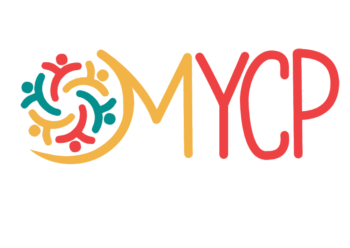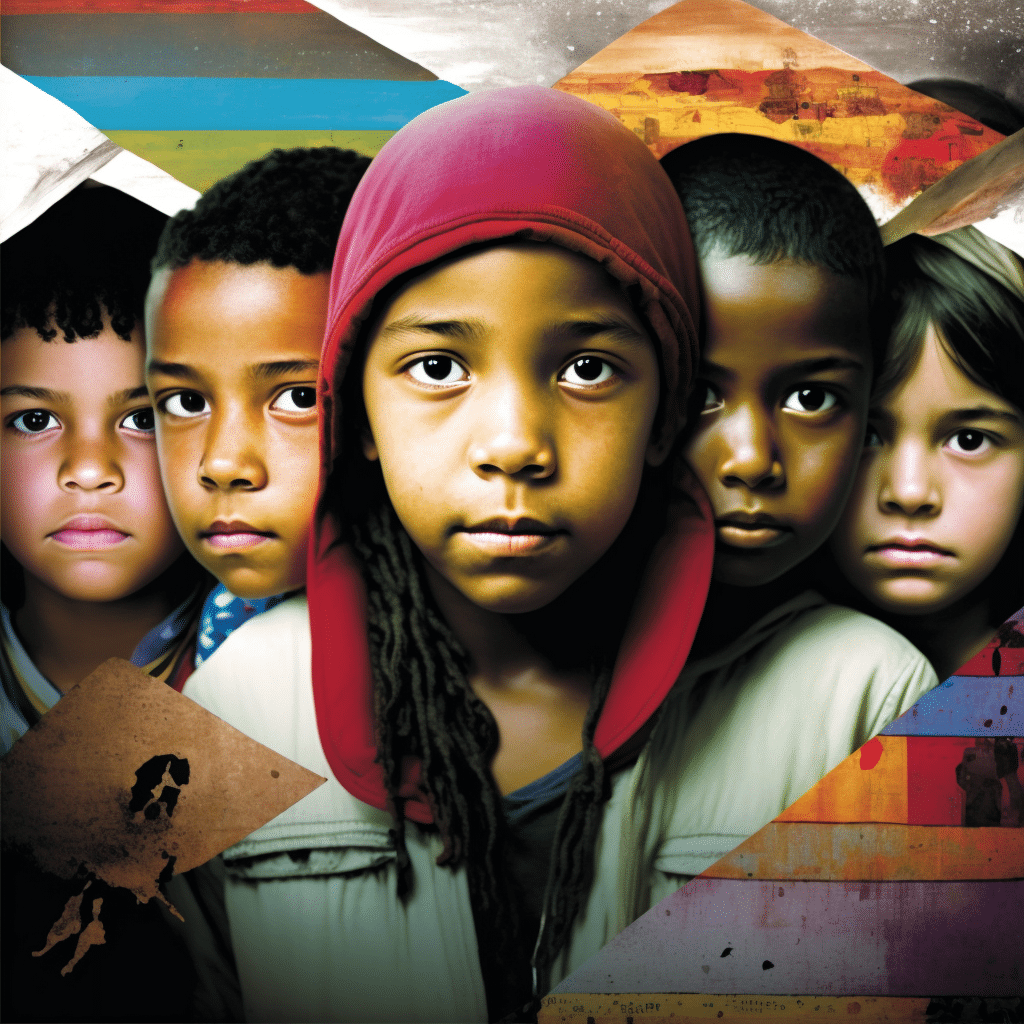On behalf of Migration Youth & Children Platform
the migration constituency of the Major Group for Children and Youth
- This is a youth-led submission on behalf of the Migration Youth & Children Platform (herein referred to as “MYCP”), the migration constituency of Major Group for Children and Youth (herein referred to as “MGCY”), in consultation with global grassroots youth, youth-led organisations, networks, collectives and movements.
- MYCP’s key priorities in regard to this submission are:
- Ensuring meaningful youth co-leadership, co-creation, and co-ownership in shaping legislation around the international climate mobility agenda, centring especially young women, girls, youth facing multiple and intersecting forms of discrimination and marginalisation, youth on the climate frontlines, and youth on the move.
- Addressing fragmentation of climate mobility policy-advocacy and legal efforts across the UN system by ensuring coordination between all relevant stakeholders.
- Continuing to work on enhancing safe, orderly, and regular pathways for all migrants in vulnerable situations, adopting human rights-based and people-centred approaches.
- As temperatures rise and ecosystems change, climate change, pollution and biodiversity loss, phenomena termed the ‘triple planetary crisis’, have become some of the biggest challenges of our century. We live in an era where environmental disasters are exacerbating climate-induced migration and forced displacements, affecting millions of people around the globe. In 2021 alone, over two million persons were displaced in Sub-Saharan Africa due to climate-related crises. In the same year, the Internal Displacement Monitoring Center (IDMC) reported 1.6 million Internally Displaced People (IDPs) across the Americas due to environmental disasters. In many of these cases, we find at the heart of those affected that youth, children and vulnerable communities are the ones being impacted the most. Worldwide, climate-related events have significantly contributed to the displacement of over 50 million children.
- The adverse effects of climate change and environmental disasters bring about long-term consequences that, along with the intersectionalities of a given demographic, go beyond the direct impact of forcible displacement, directly affecting the human rights of those involved. We are deeply concerned that given the devastating implications of environmental disasters, there is no legal definition for a climate change refugee, consequently limiting national and international legal protections for those displaced.
- We believe the current designation of climate refugees as environmental migrants is unjust and unfair since many do not have homes to return to due to climate change and subsequent loss and damage.
- Before continuing, we must recommend having an official definition of climate change refugee (herein referred to as “climate refugees”). This definition should, at the very least, provide the term to be defined, the concept applicable to said term, and the differentiating characteristic. We strongly encourage Member States to negotiate such a definition based on the following principles and suggestions:
- We suggest defining a climate refugee as a person who has been forcibly displaced from their home, temporarily or permanently, due to environmental disruption or disaster.
- And the designation of such persons to be entitled to humanitarian protection.
- We further recommend the amendment of Article 1 of the 1951 Convention Relating to the Status of Refugees (herein referred to as the “UN Refugee Convention”) to include environmental disaster as a legal basis upon which one can claim refugee status.
- Further to this, international refugee law should recognise, and make provision for, UN General Assembly Resolution A/76/L.75, establishing access to a clean, healthy and sustainable environment as a universal human right.
- We suggest this be used as a basis to permit those fleeing environmental disaster or disruption upon which an asylum claim can be made and refugee status be granted.
- Concerning the above, we further recommend:
- To extend the non-refoulement principles to those forcibly displaced due to environmental disasters or disruption,
- And to extend the United Nations High Commissioner for Refugees’ mandate to provide protection and assistance to those displaced (internally and/or across international borders) due to environmental disasters or disruption.
- We emphasise the right of persons to migrate (herein referred to as “environmental migrants”) in a safe, orderly, and regular manner resulting from climate change following the Global Compact on Migration.
- Due to the physical and social barriers present around the world, forced migrations come with repercussions that go beyond the physical movement of people themselves. Existing inequalities deepen, and some new ones emerge, leading many climate refugees, especially women, girls, children, and indigenous communities, to unprecedented levels of disruption in many aspects of their lives.
- Persons affected by environmental disasters or disruption are at risk of abuse and violence, including sexual and gender-based violence, unsafe and irregular migration, lack of access to physical and mental health, lack of education, and in many instances, to the psychological trauma of their journey. Many climate refugees fall into poverty and food insecurities resulting from forced migration.
- Children & youth rights are often placed in flux as a result of forced displacement and migration, with 1 in 8 international migrants being a child, and a total of 36.5 million children being forcibly displaced in 2021 according to UNICEF.
- Rights protected for all children under the United Nations Convention on the Rights of the Child are particularly at risk for youth on the move, especially education (Article 28), healthcare (Article 3) and child separation (Article 9).
- We remain severely concerned about the detention and separation of migrant and refugee children from their families. Children and youth should be able to stay with their parents at all times during the migration/asylum process, and the family unit should be treated as an entity upon arrival.
- Under Article 37 (b) of the Convention, the arrest, detention or imprisonment of a child should be a “measure of last resort” in all instances, in particular with respect to migration and forcible displacement.
- We remain severely concerned about the detention and separation of migrant and refugee children from their families. Children and youth should be able to stay with their parents at all times during the migration/asylum process, and the family unit should be treated as an entity upon arrival.
- Rights protected for all children under the United Nations Convention on the Rights of the Child are particularly at risk for youth on the move, especially education (Article 28), healthcare (Article 3) and child separation (Article 9).
- Environmental disasters have profound and damaging impacts on Indigenous Communities in different corners of the world.
- We call to acknowledge the intricate relationship between Indigenous Peoples and the environment.
- Indigenous communities inhabit regions whose ecosystems have high levels of vulnerability to the effects of climate change. Changes in global temperatures and the increasing recurrence of environmental disasters like desertification, floods, fires, reduction of snow covers, droughts, and others, have lasting changes in these fragile ecosystems.
- Additionally, for these Indigenous Populations, the connection with their environment goes beyond the physical. For many tribes around the world, the physical location represents significant aspects of their culture, heritage, and modes of living. They are the de facto protectors of the land, nurturing and safeguarding it against degradation. For these people, forced migrations, which tend to be permanent, go beyond leaving their homes, in reality, they are forced to leave their identities behind.
- Forced migrations aggravate existing challenges faced by Indigenous Peoples and increase their risk of facing double discrimination as migrants and indigenous peoples, leaving them:
- Vulnerable to irregular migration methods such as human trafficking and smuggling.
- Exposed to situations of sexual, physical, and mental violence.
- With restricted access to legal assistance due to their status as climate refugees.
- Without relevant information in a language/manner accessible to them.
- Susceptible to human rights violations, food insecurity, poverty, and health issues, among others.
- Beyond forced migrations, environmental disasters and disruption pose an immediate threat to the survival of many Indigenous Communities, even though these communities have a limited carbon footprint, emitting few greenhouse gases, and are, in fact, a vital part of the ecosystems in which they reside.
- We call to acknowledge the intricate relationship between Indigenous Peoples and the environment.
- Recognising that climate change has a considerable impact on vulnerable communities
- We call for the meaningful inclusion, consultation and public participation of children, youth and vulnerable communities in environmental decision making and action.
- With respect to legal protections for environmental migrants and climate refugees we recommend the following:
- An international disaster prevention and reduction framework.
- With special consideration for indigenous populations that preserve and respect their culture and traditions.
- Strategies should be developed in conjunction with indigenous populations as many are well-versed in combating the effects of climate change and land revitalisation, for example, the Kogi tribe in Colombia.
- With special consideration for indigenous populations that preserve and respect their culture and traditions.
- Responsible relocation policies, developed with meaningful participation of affected communities, which ensure that climate change refugees, whose places of origin have become inhabitable, are provided with safe alternatives that protect their human rights, as well as, ensure access to food sources, health care, education, among others, as described below.
- Human rights protections:
- Notably the right of access to fundamental human rights, inter alia, safe water, food, quality education, physical and mental healthcare, sexual and reproductive health and rights, shelter and adequate housing, and decent work and employment opportunities which remain inequitably distributed rights to refugee and migrant youth populations hindering their development.
- With particular attention to the protection and safety of women and girls, in all their diversity, in regards to contemporary forms of slavery and trafficking in persons.
- We advocate, in addition to prevention measures against human trafficking cases, to guarantee the protection of survivors before, during and after the legal justice and investigation processes.
- We ask for commitments to provide unrestricted access to mental health services for survivors of trafficking, especially for children and vulnerable groups.
- Reaffirming UN General Assembly Resolution A/76/L.75, establishing access to a clean, healthy and sustainable environment as a universal human right.
- We encourage updating human rights, particularly child rights, frameworks and conventions in lieu of this.
- An international disaster prevention and reduction framework.
- We recognise not all environmental migrants will want to leave their home country, and therefore recommend the establishment of safe legally-entrenched passage routes for environmental migrants from areas most vulnerable to climate change to less vulnerable areas within and across national borders.
- We strongly urge against the immediate placement of environmental migrants and refugees in detention centres as a place of ‘shelter’ and/or housing.
- We recommend establishing international and national mechanisms for climate refugees wishing to return to their home country.
- We advocate for the allocation of temporary humanitarian permission to stay for climate refugees as a way to permit for safety and protection during the occurrence of environmental disasters or time period of disruption.


